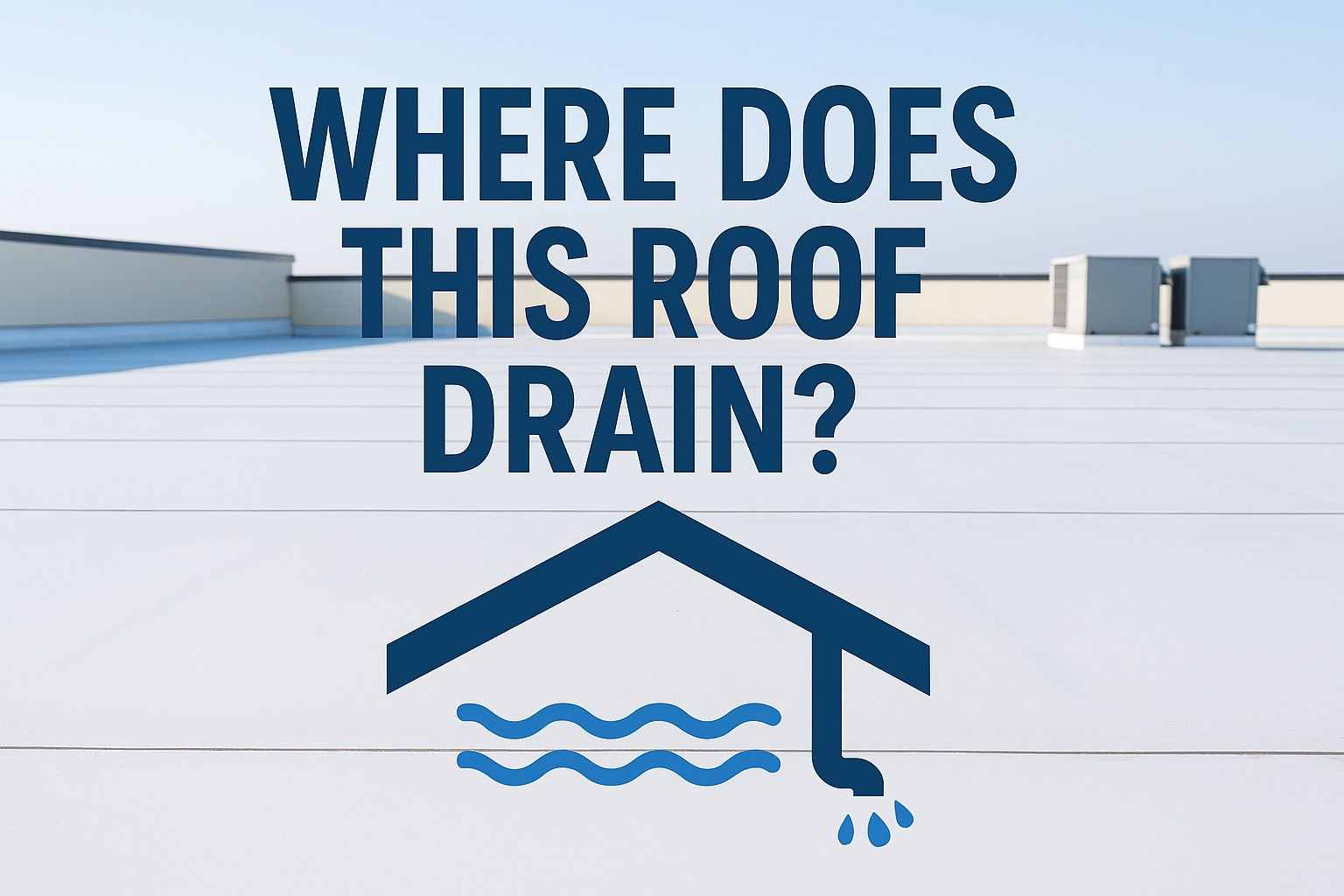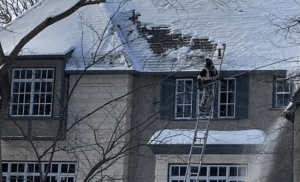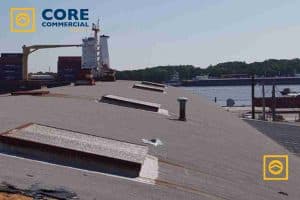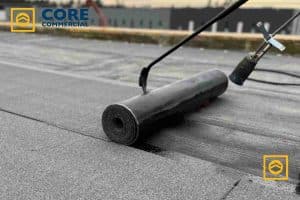Every roof drains through a built-in slope and drainage system that channels water toward internal drains, scuppers, or gutters. When this design fails or isn’t properly planned, water collects on the surface, leading to leaks, weakened membranes, and structural damage over time. That’s why the most important question any roofer can ask isn’t about materials or membranes; it’s simply: “Where does this roof drain?” Understanding that flow is the key to building a roof that lasts.
At Core Roof Solutions, we begin every project by studying how water moves across the surface before a single product is chosen. By mapping slopes, checking drain placement, and designing efficient flow paths, we ensure that water never lingers where it shouldn’t. Because when drainage works, everything else, from the membrane to the warranty, stays stronger for longer.
Table of Contents
Why Drainage Dictates Everything
In low-slope roofing, water is the silent destroyer. It doesn’t show up with fanfare or warning signs; it just sits. And when it sits, it seeps.
A membrane can only do so much if water is trapped with nowhere to go. Even the best installation, with perfect welds and flashing, will eventually break down if ponding water lingers after every rain. Over time, those shallow pools turn into saturated insulation, microbial growth, and deck rot.
Every building owner has seen it: “It’s just a little standing water.” But fast-forward five years, and that same spot is where leaks start and warranties end.
That’s why, at Core Roof Solutions, we start every project by mapping the water flow before we talk materials.
The Forgotten First Step in Roof Design
Far too often, roofing projects begin with product selection, manufacturer specs, or insulation thickness, but skip the most critical step: drainage design.
Ask any roofer who’s done a tear-off, and they’ll tell you:
You can spot the mistakes of the last contractor by where the water sits.
Here’s the truth: if the water isn’t leaving the roof, nothing else matters.
You can add insulation, upgrade the membrane, flash it twice, and still fail inspection because your slope or drain layout wasn’t corrected.
When we design a roof, drainage is the first layer of the conversation, not the afterthought.
What Proper Drainage Looks Like
A roof that drains properly is one that moves water effortlessly, without shortcuts or guesswork. That means:
- Crickets & Tapered Insulation: Slope isn’t optional. Even a 1/8” per foot taper can make the difference between ponding and performance.
- Strategic Drain Placement: Every drain should have a purpose and a clear path. Misaligned drains are one of the most common sources of ponding.
- Scuppers & Overflows: These are the roof’s safety valves. They should never be an afterthought or “wherever it fits.”
- Seam Orientation: Your seams should follow the flow of water, not fight against it.
- Edge Metal & Parapets: Properly detailed edges help guide runoff away, not back onto the roof system.
When you see a clean slope, properly placed drains, and tight transitions, you’re not just looking at a good roof; you’re looking at good design thinking.
Real-World Consequences of Ignoring Drainage
We’ve all seen it: a brand-new TPO roof, immaculate seams, perfect flashings, and within the first rain, a 30-foot pond appears around the HVAC unit.
That pond doesn’t go away in a day. It sits there, baking in the sun, breaking down the membrane, collecting dirt and algae. Eventually, the insulation softens, the welds weaken, and before long the building owner is calling for warranty service.
Here’s the painful part: that leak wasn’t caused by workmanship; it was caused by design.
And design starts with asking where the water is supposed to go.
A Better Way to Build
At Core Roof Solutions, we’ve built our process around prevention, not repair. Before a single roll of TPO hits the deck, we:
- Survey the existing slopes and drainage points
- Identify all low spots and potential ponding areas
- Design tapered insulation layouts that promote flow
- Confirm scupper and drain placement with the client
- Mark flow paths on-site before installation
Because when the water leaves the roof efficiently, everything else lasts longer: membrane, flashing, insulation, and even the structure itself.
The Takeaway
If you’re designing, installing, or managing a roof, start with this mindset:
“Before we put anything down, let’s figure out where the water goes.”
That single question will save thousands in repairs, extend your roof’s life, and keep every stakeholder from contractor to client, on the same page.
Because in roofing, great systems don’t just keep water out; they move it out.
And when you build with drainage in mind, you’re not just protecting a roof; you’re protecting the building, the investment, and your reputation.
FAQs
Why is roof drainage important?
Proper drainage prevents water buildup, leaks, and structural damage. Without it, roofs deteriorate faster and warranties may fail.
What happens if water ponds on a flat roof?
Standing water can damage membranes, weaken seams, and cause insulation decay or microbial growth over time.
How do roofers design effective drainage?
Skilled roofers map water flow, plan slopes with tapered insulation, and place drains and scuppers strategically before installation.
What are common drainage components on flat roofs?
Drains, scuppers, gutters, tapered insulation, and crickets all help move water off the roof efficiently.
How much slope should a flat roof have?
A minimum slope of 1/8 inch per foot is typically recommended to ensure steady water runoff.
Can poor drainage void a roof warranty?
Yes. Manufacturers often deny warranty claims if standing water contributes to roof damage or leaks.
How can I tell if my roof drains properly?
Check after rain—water should clear within 24–48 hours. Persistent puddles signal a drainage issue.
What’s the best way to fix ponding water?
Add or adjust tapered insulation, improve slope, or reposition drains to restore proper water flow.
Why do new roofs sometimes still have drainage problems?
Poor design or misaligned drains during installation can cause water pooling even on new roofs.
How does Core Roof Solutions prevent drainage issues?
By surveying slopes, designing flow layouts, and confirming drain placement before installation, ensuring long-term performance.






